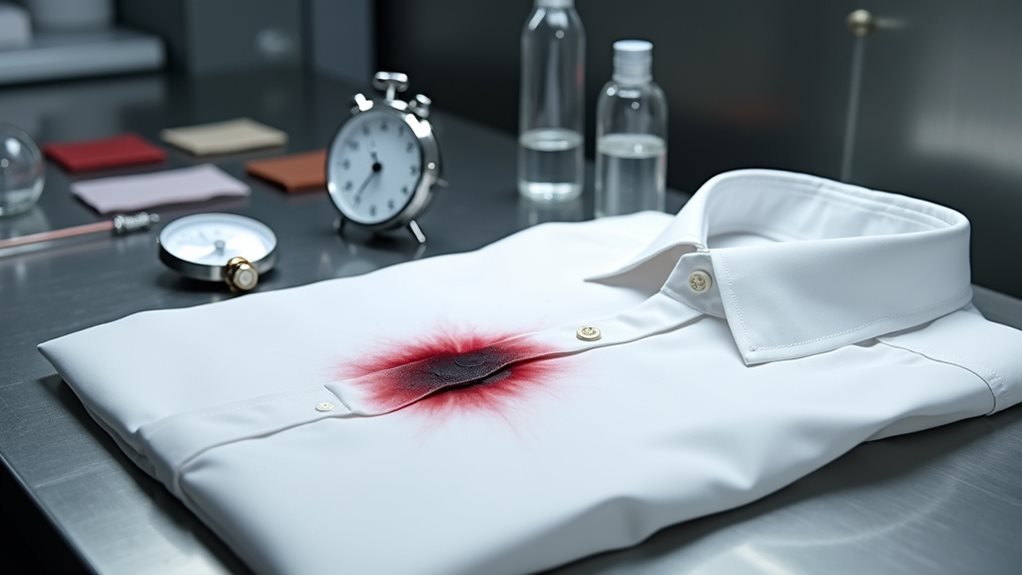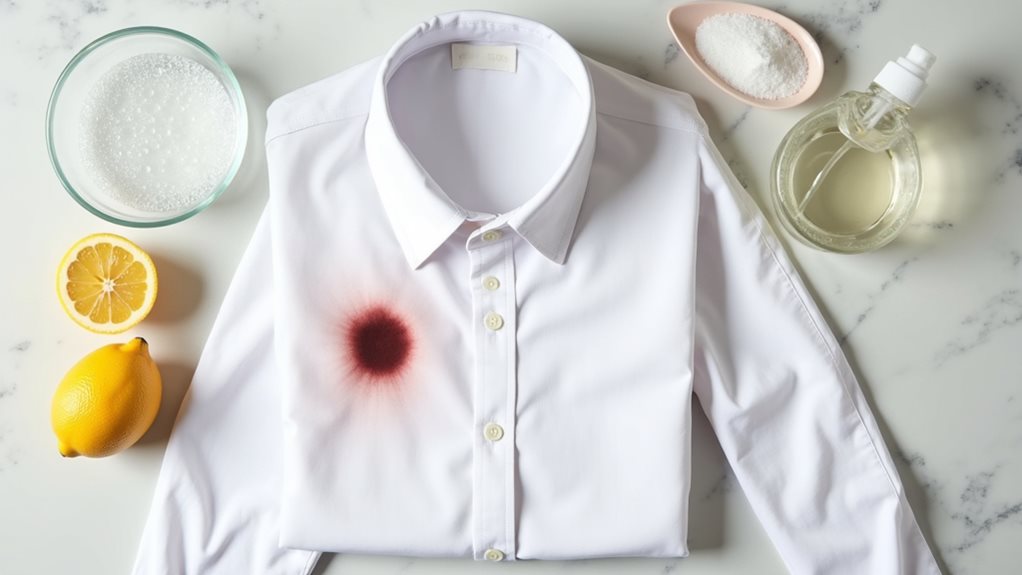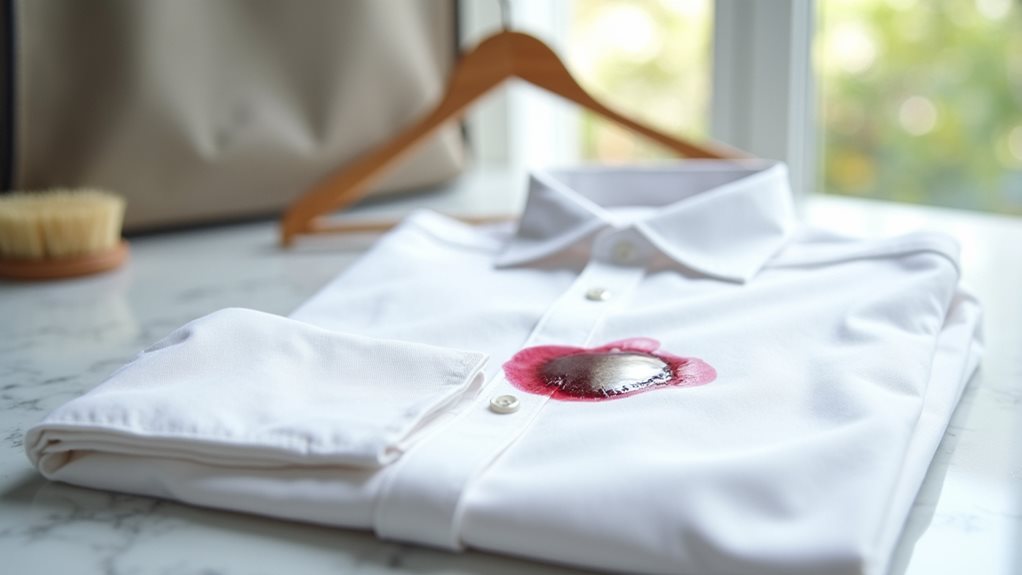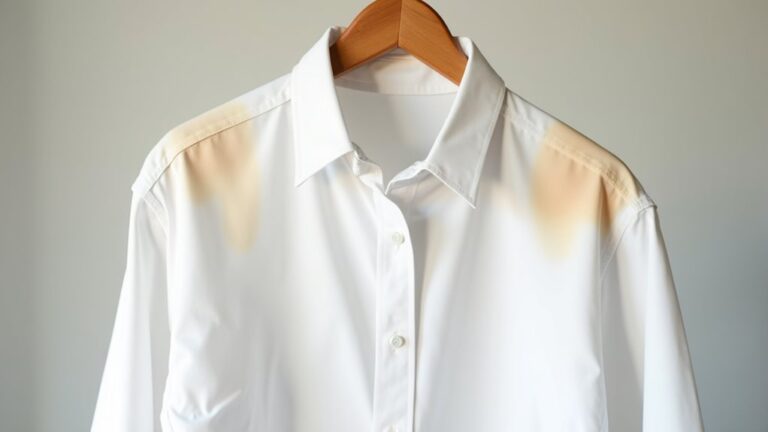Yes, dry cleaning can remove blood stains, and I’ve seen professional cleaners work miracles with their specialized solvents that target blood proteins directly. Your success depends on how quickly you act—fresh stains come out much easier than set ones—and what fabric you’re dealing with, since natural fibers like cotton respond better than delicate materials. The key is getting there fast, because those protein bonds strengthen over time, though even older stains often lighten considerably with proper treatment, and there are additional strategies that can boost your chances.
Understanding How Blood Stains Bond With Fabric
The chemistry of blood stains creates a fascinating yet frustrating puzzle that I’ve witnessed countless times in my years of dealing with fabric care emergencies.
When blood first touches fabric fibers, you’re dealing with proteins that immediately start bonding with the material, especially once exposed to air. Think of it like invisible glue that strengthens over time – fresh stains practically beg for prompt treatment, while older ones develop an almost stubborn personality.
Natural fibers like cotton respond better to cleaning methods than delicate fabrics, which can be finicky about stain eradication. The longer blood sits, the stronger that bond becomes, making it set into the fabric permanently.
Professional dry cleaners use specialized solvents specifically designed to break down these protein-based stains, though success rates can vary significantly depending on the stain’s age and fabric type.
Your removal success depends entirely on catching it early!
The Dry Cleaning Process for Blood Stain Removal

When professional dry cleaners encounter blood stains, they don’t just toss your garment into the standard cleaning cycle and hope for the best – trust me, I learned this the hard way after ruining my favorite silk blouse years ago!
The dry cleaning process for blood stains actually begins with careful pre-treatment using specialized spotting solutions that target blood’s protein structure. Your cleaner will examine the fabric type first, since natural fibers like cotton and wool respond much better to stain removal than delicate fabrics.
Professional dry cleaners always start with specialized pre-treatment solutions that break down blood proteins before examining your fabric type.
Then they’ll apply perchloroethylene, a powerful solvent that’s incredibly effective at breaking down blood proteins.
Here’s the thing though – early intervention makes all the difference, so don’t wait around hoping that stubborn stain will magically disappear! 😅
The success of removing blood stains through dry cleaning depends on several factors including the age of the stain, the specific fabric composition, and how deeply the blood has penetrated the fibers.
Factors That Affect Blood Stain Removal Success

Several key factors determine whether your dry cleaner will work miracles on that blood stain or deliver the disappointing news that some marks are permanent, and understanding these variables can save you both heartbreak and money.
Your fabric type matters tremendously – natural fibers like cotton and wool respond beautifully to dry cleaning solvents, while delicate fabrics like silk require gentler handling that might limit removal success.
Here’s what influences your stain removal outcomes:
- Fresh crimson droplets glistening on fabric fibers
- Ancient, rust-colored marks deeply embedded in weave
- Cotton threads readily releasing protein bonds
- Silk strands demanding careful, whisper-soft treatment
Prompt treatment within hours dramatically improves your chances, as blood proteins haven’t fully bonded yet.
Older stains become stubborn adversaries that often lighten but refuse complete surrender, regardless of professional expertise.
Always inform your dry cleaner about the stain’s location and nature, as this allows them to apply specialized solvents and pre-treatment methods specifically designed for blood removal.
Alternative Methods When Dry Cleaning Isn’t Enough

Although dry cleaning professionals work wonders with their arsenal of specialized solvents, sometimes even their expertise hits a wall against stubborn blood stains, leaving you staring at a garment that’s cleaner but not completely rescued.
Even professional dry cleaners with their specialized solvents can struggle against particularly stubborn blood stains on garments.
When your trusted dry cleaning service can’t fully remove blood stains, don’t panic—you’ve got backup options that might surprise you with their effectiveness.
Home remedies like hydrogen peroxide work brilliantly on fresh stains, while enzyme-based stain removers become your secret weapon against dried blood.
Try soaking fabric in cold water with salt first, especially for delicate fabrics that need gentle coaxing. Always test stain treatments on hidden areas before going full throttle 😅.
Blood stains respond better to water-based treatments than the chemical solvents typically used in dry cleaning processes.
If these DIY attempts fail, specialized stain removal services offer professional assistance that goes beyond standard cleaning methods.
Best Practices Before Taking Blood-Stained Clothes to the Cleaner

Before you rush to your dry cleaner with that blood-stained garment clutched in your hands, there’s actually a strategic game plan that’ll dramatically improve your chances of complete stain removal, and trust me, I learned this the hard way after ruining my favorite white shirt by making every rookie mistake in the book.
These best practices will set you up for success:
- Act fast – treat the stain within hours while it’s still fresh
- Blot gently – remove excess blood without grinding it deeper into fibers
- Rinse with cold water – hot water sets blood stains permanently
- Try pre-treating – enzyme-based stain removers break down proteins effectively
When you arrive, communicate the fabric type and stain details clearly, because professional cleaning works best when your cleaner understands exactly what they’re tackling. Keep in mind that while dry cleaning solvents excel at removing oil-based components, they may be less effective on the water-soluble proteins found in blood stains, which is why proper pre-treatment becomes even more crucial.




